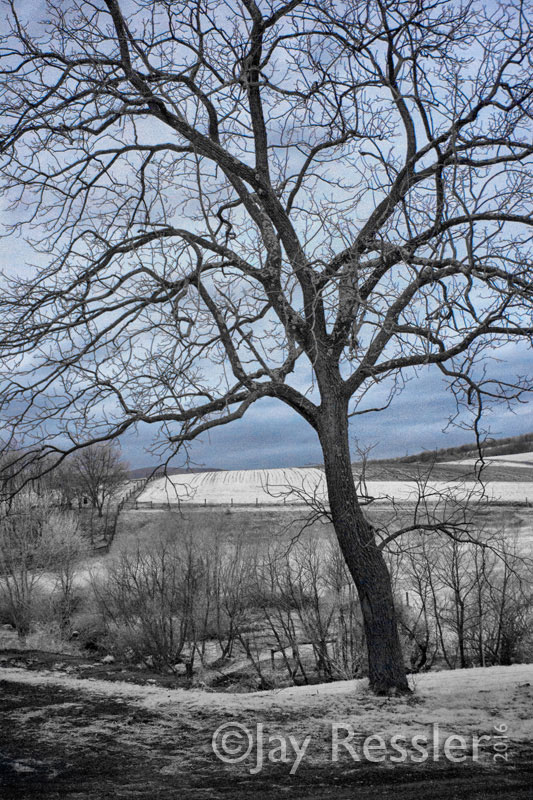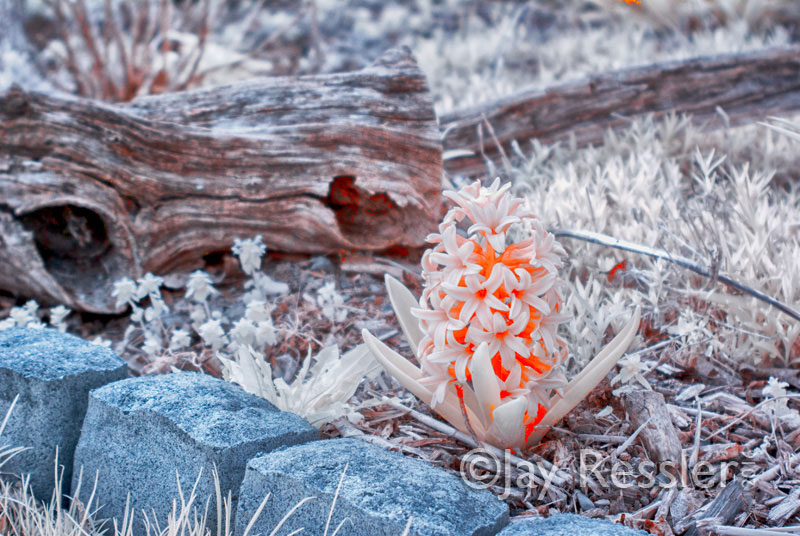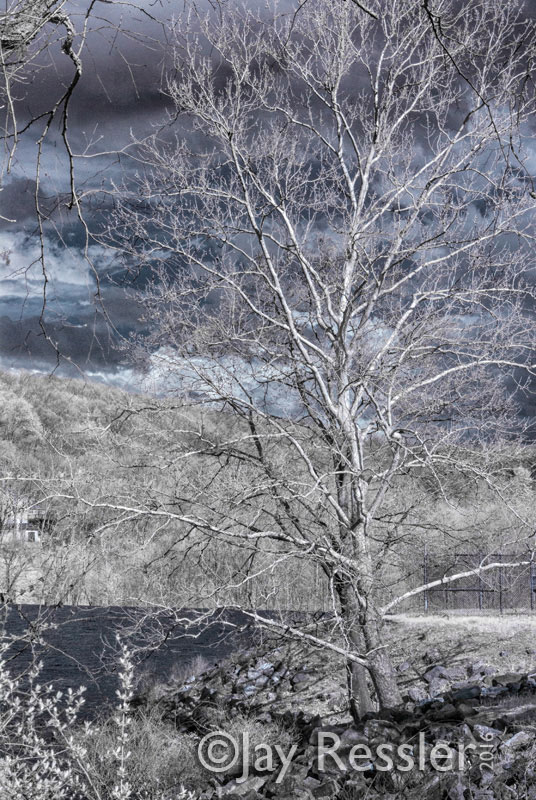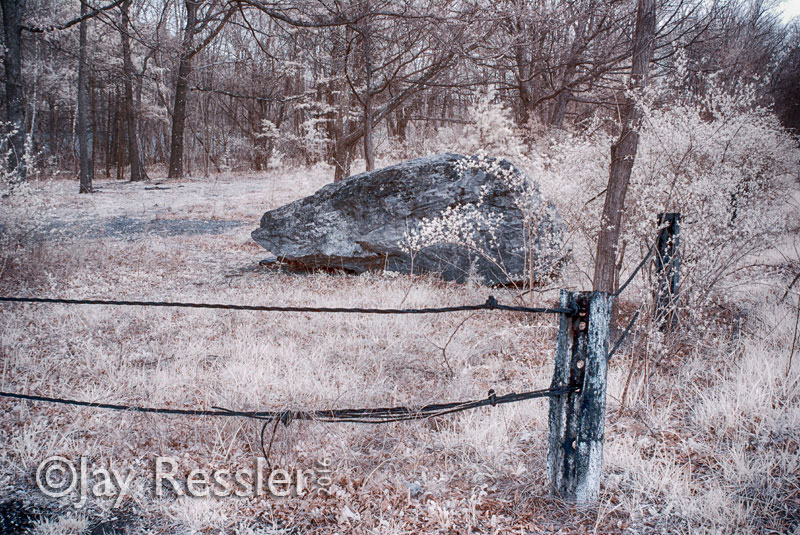Week No. 15. Guardians of the Planet
In honor of Earth Day and of the show opening tonight at Studio B in Boyertown, PA, Local by Local, this gallery focuses on trees and other vegetation — including crabgrass — the stuff on which animal life depends. Included in several images are bits of trash left in forested areas.
I’ve included information with each picture about the camera used to capture the picture and the software used to develop it including the company that converted my Pentax K10D into an infrared camera — Kolari Vision. Most of the other outfits that convert cameras that I found, or were recommended to me, only deal with Canikon cameras.
For those interested in understanding better understanding Infrared photography, false colors, and the surreal effects it produces read my 2009 article here. The article, which includes a basic summary of the physics of light, should be read by all landscape artists whatever their medium. I hope readers won’t get lost in the science, but it’s what makes me appreciate the magic of it all.
Much of the content is based on my early experiments using an old point and shoot that I converted myself in addition to using IR filters on other cameras. The article has been slightly updated with a cursory look at processing IR files shot in camera RAW and channel swapping to produce the blue sky effect. I recommend Laurie Klein’s Infrared Photography: Artistic Techniques for Brilliant Images for a more in-depth (and less technical) look at the art form.









